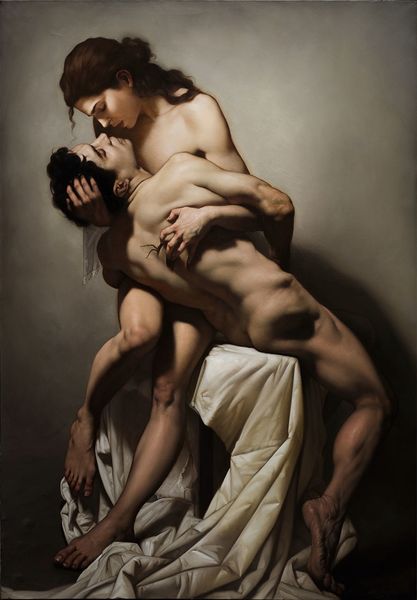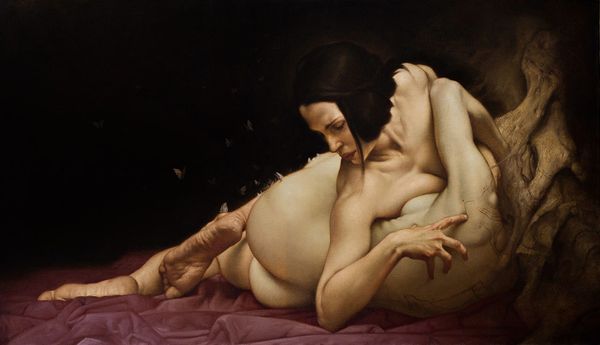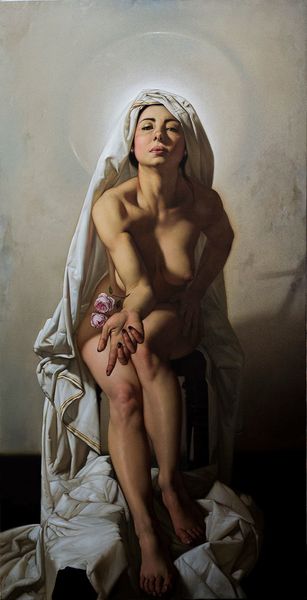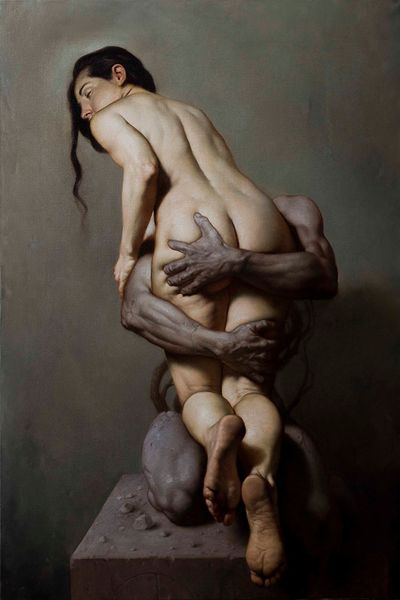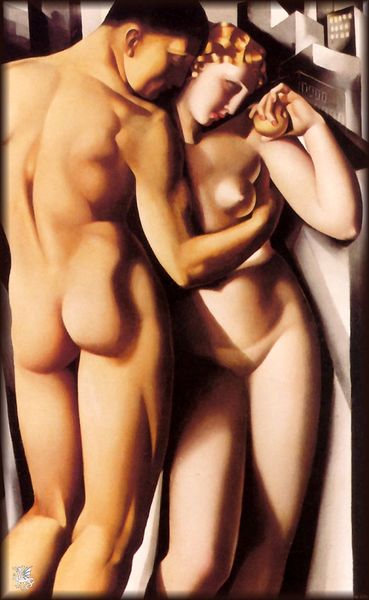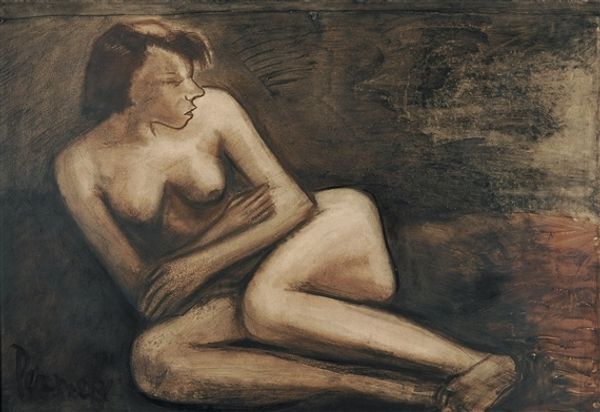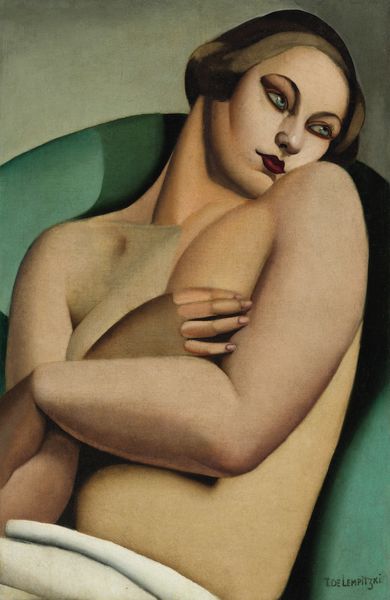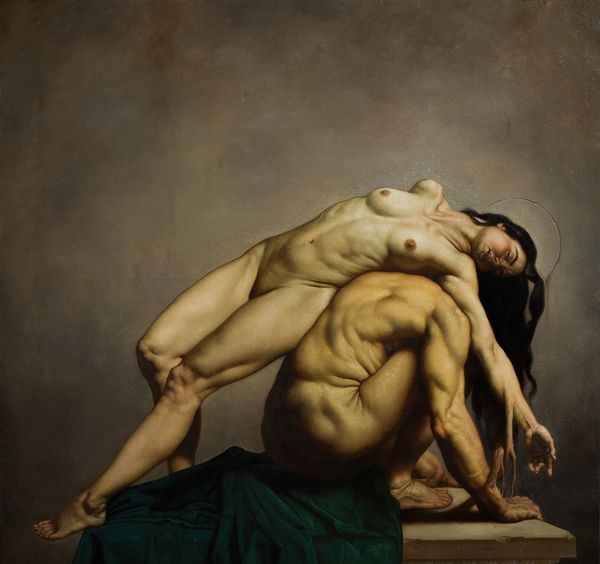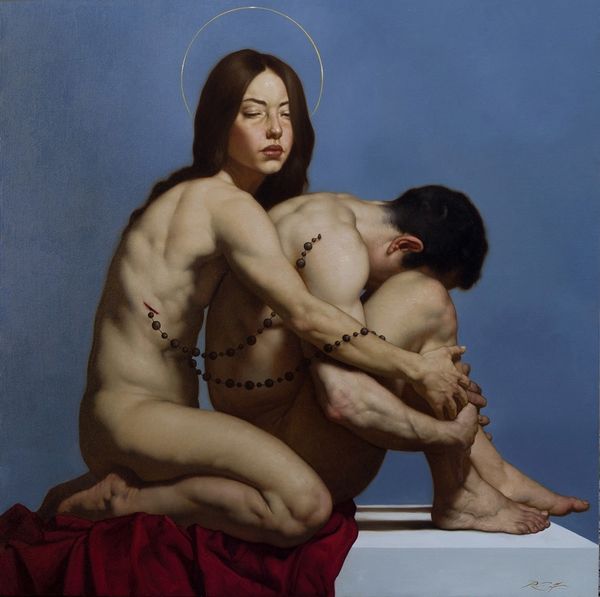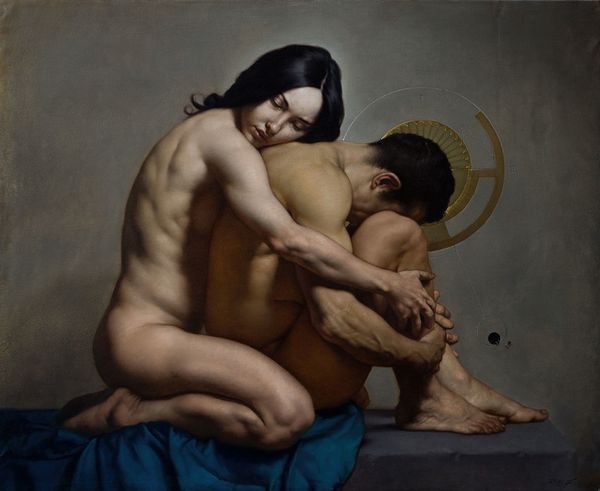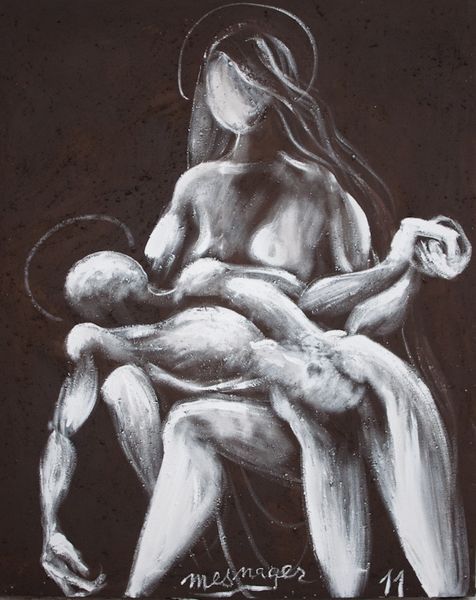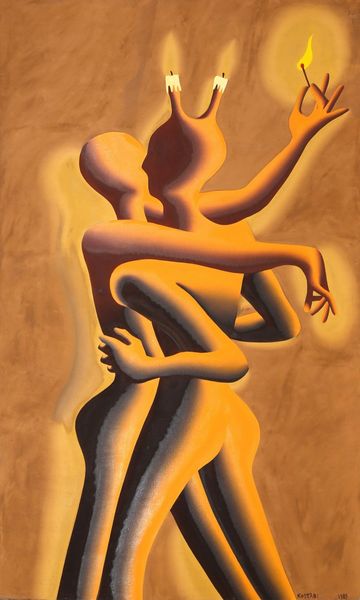
painting, oil-paint
#
allegory
#
painting
#
oil-paint
#
figuration
#
nude
#
surrealism
Copyright: Modern Artists: Artvee
Curator: The way the brushstrokes are smoothed in René Magritte's "Les jours gigantesques", made with oil paint in 1928, lends this piece a dreamlike and unsettling feeling. What’s your first take? Editor: Disquieting indeed! There’s a strange stillness. The muted colors – primarily browns, tans, grays – combined with the somewhat coarse, almost blocky figures give it a sculptural weight but also a disconcerting intimacy. It feels almost oppressive, doesn't it? Curator: Absolutely. Considering the title, translated as "The gigantic days", it compels us to explore gender dynamics of the era, reflecting themes of dominance and objectification evident in the intertwined bodies, the woman naked, the man clothed, the almost brutal grasp. We must interrogate what societal narratives and power imbalances this tableau exposes, particularly within the context of the surrealist movement. Editor: And to look closer at Magritte’s material choices, the layering of oil paint seems deliberately uncomplicated. This simplicity is not accidental. Rather than attempting photorealism, he directs attention to the conceptual clash. The disjuncture created through the uncanny combination of textures —flesh and fabric—pushes at conventional definitions of beauty, disrupting normative consumption patterns related to art. The suit reads as this oppressive layer on flesh; what sort of work, physically, could a figure like that perform? Curator: It forces a reckoning, doesn't it, with the power of representation? The positioning of the figures creates a conversation around how we’ve been conditioned to interpret interactions between genders, offering critical commentary about the societal lens through which such relationships are viewed, often reinforcing inequalities. It is a visual manifesto critiquing norms of intimacy within power structures. Editor: Agreed. And looking closely at his process and those slightly crude joins between the painted surfaces, that is to say the man's arm and back in the scene, for me opens up the materiality to deconstruction itself. Are the bodies truly separate or does one's outline make up the outline of the other? Curator: Ultimately, “Les jours gigantesques” serves as a potent reminder of art's role as both mirror and hammer, reflecting society's multifaceted narratives whilst simultaneously equipping us to dismantle oppressive ideologies. Editor: Precisely, seeing it not merely as aesthetic exercise, but as an act of engaging with material culture to challenge the very framework upon which it exists, its impact then reverberates far beyond the gallery walls.
Comments
No comments
Be the first to comment and join the conversation on the ultimate creative platform.
